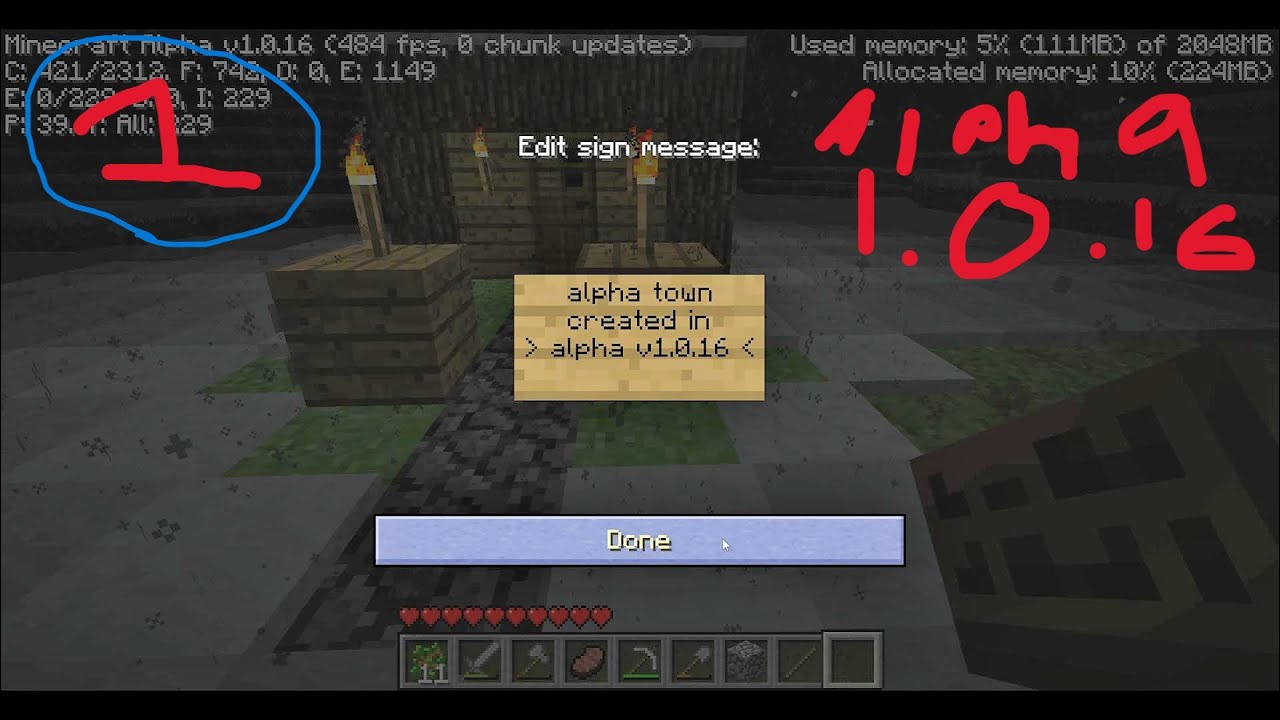I Coded Minecraft in *Only* 3 MONTHS!!!!
Summary
TLDRIn this video, the creator embarks on the challenging task of recreating Minecraft, going beyond basic mechanics to implement key gameplay features like menus, block creation, lighting, and physics. Despite numerous hurdles, they optimize performance, improve memory usage, and add essential game elements like a hotbar and entity management. The project also tackles advanced topics such as chunk rendering and multi-threading. With future plans to expand on features like crafting, multiplayer, and 3D models, the creator invites viewers to follow the journey on Twitch and download the clone, promising tutorials for those interested in creating their own Minecraft clone.
Takeaways
- 😀 The creator decided to recreate Minecraft because they felt other clones didn’t fully capture the game’s features, particularly things like menus and debugging tools.
- 😀 The first step in the process was rendering a square and applying a Minecraft-like grass block texture, which surprisingly took longer than expected.
- 😀 To make adding new blocks easy, the creator used a YAML system where you describe the block and its textures, allowing for simple future expansion.
- 😀 After setting up basic block rendering, the creator implemented a 3D player controller, which didn’t work perfectly at first but was later fixed.
- 😀 The creator worked on rendering cubes and optimizing the GPU’s work by culling interior faces to avoid unnecessary processing and lag.
- 😀 Simplex noise was used to generate terrain, which, combined with chunk serialization and deserialization, allowed for saving and loading the world effectively.
- 😀 To tackle performance issues, the creator implemented multi-threading and vertex compression, reducing memory usage from 30GB to 4GB for a 12-chunk radius.
- 😀 An entity-component system (ECS) was used to handle entities like the player and manage physics, such as stopping the player from falling through blocks.
- 😀 The creator added a font rendering system, making it possible to build menus, buttons, and display text, bringing the game closer to a finished product.
- 😀 OpenGL's asynchronous data operations (ASDO) were introduced to improve performance by allowing more efficient data transfers between CPU and GPU.
- 😀 The creator began working on complex features like lighting and commands, with plans for future additions such as multi-colored lights, crafting, inventory management, and multiplayer support.
Q & A
Why did the developer decide to recreate Minecraft despite many existing clones?
-The developer felt that previous Minecraft clones didn't do justice to the original game, often lacking important gameplay elements such as menus, debugging statistics, saving, and loading features. They wanted to create a more complete and polished version of Minecraft.
What was the first step the developer took in recreating Minecraft?
-The first step was rendering a square on the screen, which was more challenging than expected. The developer then added a grass block texture to make it more Minecraft-like.
How did the developer handle adding block textures in the game?
-The developer combined all the textures into a single large image. To make it easier to add new blocks in the future, they implemented a block creation scheme called 'yaml,' which allowed new blocks to be added by writing simple descriptions and specifying textures.
What was the issue with the 3D player controller, and how did the developer address it?
-The developer initially used code from a website for the 3D player controller, but it didn't work correctly at first. After debugging and fixing the issues, the developer successfully implemented the controller.
How did the developer solve the performance issues when rendering cubes?
-The developer used an optimization technique called 'culling,' which prevents the program from drawing unnecessary interior faces of cubes when they're adjacent to other blocks. This saved GPU resources and improved performance.
What challenges did the developer face when implementing chunk generation, and how did they address it?
-The developer faced challenges with memory usage and performance, especially when generating large chunks. They optimized the code using multi-threading and vertex compression, which significantly reduced memory usage from 30GB to 4GB.
What is the significance of Simplex noise in the game development process?
-Simplex noise was used to generate terrain for the Minecraft clone. It helped create more natural and varied landscapes, making the world generation feel more dynamic and authentic to Minecraft.
How did the developer tackle physics in the game?
-The developer used basic physics methods to prevent the player from falling through blocks and implemented raycasting to detect which block the player was looking at. They also used an entity-component system (ECS) to handle different entities' behaviors, including physics calculations.
What improvements were made to the game’s graphics and user interface (UI)?
-The developer added a custom font renderer to display text and created menus and buttons for the game's user interface. This was a significant step in making the game feel more like a polished product, complete with a hotbar and command line parsing.
What was the most difficult technical challenge the developer faced during this project?
-The most difficult challenge was implementing Minecraft's lighting system. The developer struggled with how to handle light levels and ultimately found a more efficient approach by separating sky levels from light source levels, reducing complexity and avoiding weird visual glitches.
Outlines

此内容仅限付费用户访问。 请升级后访问。
立即升级Mindmap

此内容仅限付费用户访问。 请升级后访问。
立即升级Keywords

此内容仅限付费用户访问。 请升级后访问。
立即升级Highlights

此内容仅限付费用户访问。 请升级后访问。
立即升级Transcripts

此内容仅限付费用户访问。 请升级后访问。
立即升级5.0 / 5 (0 votes)






